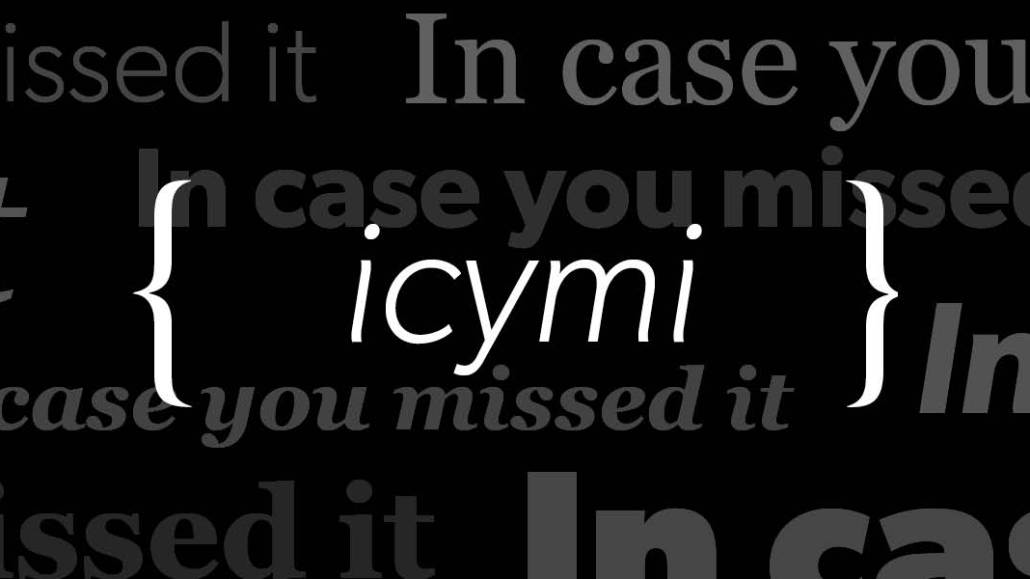Save 50% on a 3-month Digiday+ membership. Ends Dec 5.
Best of the week: For some, the bloom is off the digital rose

While you were busy meeting with the Russian ambassador this week, you may have missed some great content. Here are a few of Digiday’s hotter takes and more insightful analyses from the week that was:
The rise of the industry truther
Bob Hoffman, agency veteran and author of the Ad Contrarian blog, has a decade-old schtick: He roams the media badlands and calls bullshit on digital media hucksters. Online advertising is “lies and nonsense.” Marketers are “screwed blind.” Facebook and Google? “Creeps.” Facebook metrics: “horse shit numbers.” And that’s all in one post he put out this month.
The bloom is off digital media, and Shareen Pathak goes deep. There’s more skepticism, more conspiracy theories, more contrarians and more truthers, decrying everything from the efficacy of programmatic advertising and ad targeting to the point of brands on social media.
“I don’t get nearly as much pushback as I used to,” said Hoffman. “The advertising and marketing industries have not been skeptical enough, but it’s changing.”
Inside Condé’s slow gradual digital embrace
So perhaps it’s not such a bad thing that Condé Nast has been … let’s say deliberate when it comes to digital. If Condé’s glossy magazines are first-class, its digital operation for years has been a distant second. With its strength in print ads, digital wasn’t a priority. Forget about being ahead of the curve: It took years just to get magazines their own websites; Vogue.com didn’t launch in earnest until 2010.
That’s changing, albeit slowly. In 2014 it named its first chief digital officer, Fred Santarpia. In the two years since, Condé Nast’s digital audience grew 76 percent while time spent on the sites has increased 132 percent, per the company. “It’s a great start,” he said.
Last June, Vanity Fair launched The Hive, its first vertical outside the storied magazine, with a roster of star writers and social-first strategy. But to Mike Hogan, the magazine’s digital director, the brand was significant in another, less obvious way.
“To launch it all internally and have it happen on time and without major glitches is a new experience for us,” he said.
Facebook is pitching a new video feature
Facebook is working on a feature that would spotlight original shows and other exclusive long-form content on its mobile and TV apps, reported our own Sahil Patel in a little scooplet this week.
The feature, described as a “spotlight module” during its meetings with potential content partners, would be prominently placed inside the video tab on Facebook’s mobile app, sources said. It would feature about half a dozen or so video series for a period of 24 hours, only to refresh the section with another crop of videos the following day.
“The idea is that this would bring a lot of traffic and attention and [as a result] a lot of revenue via ad breaks,” said one source pitched by Facebook.
The module would contain original series funded by Facebook as well as content financed by media partners that Facebook has exclusively licensed for a certain amount of time, sources said. (Facebook has already started to experiment with featuring certain types of content that it thinks people would want to watch inside the video tab.)
A social media agency exec speaks truth to brands
All good things must end. The free lunch that was organic reach on social platforms is over. Now, brands looking to grow an audience on these three news feeds are told they must pay to play. In the latest edition of our Confessions series, our U.K. reporter Grace Caffyn spoke with a British social media agency executive who said the cold, hard truth still hasn’t sunk in for many brands.
“Everyone in the industry knows reach is not free anymore, but the client mindset is a couple of years behind,” this person said. “They see paying agencies like us as their entire content-creation budget, which makes it hard to say, ‘That thing you used to get for free, you need to pay extra for that.’ There’s nothing wrong with posting some organic content; you need it to sustain your community. However, when growing your audience, there’s no value putting out content if no one sees it, and hardly anyone will see it without ad spend.”
The Huffington Post woos teens with Tea
To introduce itself to its next generation of readers, the Huffington Post is going straight for their inboxes. On Monday, it will launch The Tea, a weekly newsletter targeted at female Generation Z readers (or, as they were once known, teenage girls), but unlike most newsletters, which just repackage content originally published on other platforms, The Tea’s content — an exclusive interview with a celebrity — will only live in an email. If you want it, you need to subscribe. Because if there’s one thing teenage girls love, it’s email newsletters.
More in Marketing

Ulta, Best Buy and Adidas dominate AI holiday shopping mentions
The brands that are seeing the biggest boost from this shift in consumer behavior are some of the biggest retailers.

U.K. retailer Boots leads brand efforts to invest in ad creative’s data layer
For media dollars to make an impact, brands need ad creative that actually hits. More CMOs are investing in pre- and post-flight measurement.

‘AI is permeating everything we do’: How Guitar Center developed 2 AI tools this year
This summer, the company launched a chatbot called Rig Advisor to help customers find the right instruments and products.
Ad position: web_bfu




